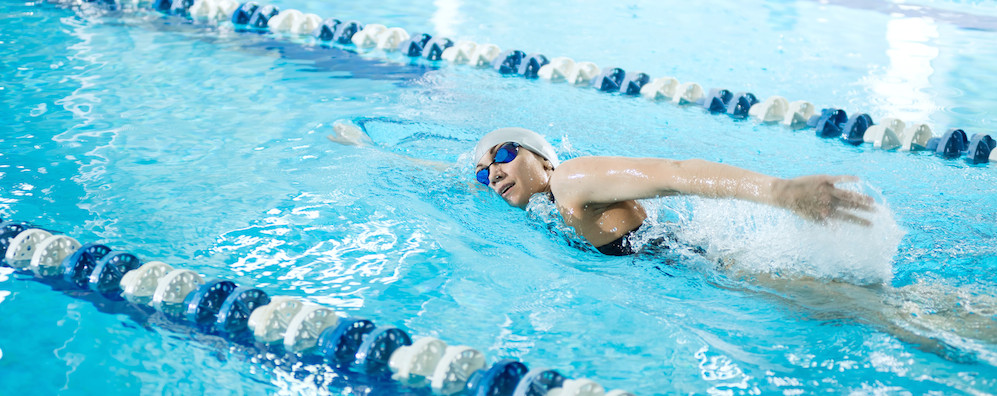
Shoulder Dislocation
Shoulder dislocation is a common injury in the active population. Both contact sports such as rugby and football and non-contact sports like swimming and volleyball are all susceptible to this injury. Imagine the shoulder joint as a golf ball on a tee. The upper arm bone (humerus) sits on the joint socket (glenoid) and the labrum holds the humerus in place. A shoulder dislocation occurs when the humerus comes out of the shoulder joint’s socket (glenoid). This joint is one of the most common areas of dislocation with dislocations commonly occurring in a forward and/ or downward direction. The recovery process of a shoulder dislocation depends on the cause and the severity of the dislocation.
Precursors to Shoulder Dislocation
Direct impact can be the cause of a shoulder dislocation, however, shoulder instability and/or muscle weakness can be a strong precursor. Some people are congenitally predisposed to shoulder instability, but for others, shoulder instability is best predicted by a previous shoulder injury.
Can I Pop It Back In?
Short answer – Yes, you can pop your shoulder back in. However, there are a couple of considerations before doing so. If it’s a partial dislocation, you can move your bone back into place without much difficulty or concern of severe injury. However, if it is a full dislocation, you may have suffered muscle and/ or ligament damage. A full dislocation will cause your humerus to rest out of normal resting position causing your muscles and ligaments to be distended. Moving your bone back in place will help the pain subside, but you’ll need to see a medical professional to understand the damage in your shoulder region.
Physical therapy treatment should begin sooner rather than later but is largely dependent on your provider and recovery goals. If you have recurrent shoulder instability or a rotator cuff tear, surgery may be required prior to starting physical therapy. Shoulder dislocations can prevented with the help of a physical therapist who can help you gain proper shoulder stability and muscle strength around the shoulder blade, joint and capsule.
Stages of Shoulder Dislocation Recovery
There are 3 specific benchmarks our physical therapists look for during shoulder dislocation rehabilitation:
- Pain-free: First and foremost, we want to ensure that all patients are not feeling any pain in their shoulder region. Nobody wants to be in pain and throughout the recovery process so we make this a top priority.
- Shoulder range of motion (ROM) and Scapulohumeral Rhythm: A shoulder dislocation causes the muscles in the shoulder region to become distended and alter the shoulder ROM. You may be able to regain full ROM but, your scapulohumeral rhythm may be distorted to allow for that range of motion. Your scapulohumeral rhythm is the timing and coordination of the scapula and humerus as they work in concert during shoulder elevation. There are two main motions to the scapulohumeral rhythm. First is flexion of the glenohumeral joint and the second is abduction. Full ROM for flexion and abduction is 180 degrees each.
- Return to activity or sport: The ultimate goal of physical therapy is to get you back to where you were before injury, and potentially beyond, by correcting any abnormal movement. For swimmers, a physical therapist will test that you can you bring your arm over head in a swim-type motion and for baseball players, you will be assessed on whether or not you can throw a ball with proper form.
Your physical therapist may use a variety of treatment methods such as manual therapy and therapeutic exercise to improve your range of motion. Manual therapy is a hands-on approach to physical therapy that, in this case, helps to mobilize the shoulder and alter abnormal scapular movements you may have. Manual therapy can aid in re-aligning the joint and facilitating proper muscle activation.
Your shoulder dislocation occurred because of a breakdown in strength and/ or loose ligaments. Along with manual therapy, your physical therapist will prescribe a variety of exercises to:
- Strengthen rotator cuff
- Strengthen scapular stabilizers
- Improve posture
- Increase glenohumeral range of motion and stability
While in recovery, you should be able to engage in most of your normal daily activities. During the initial hours of after your shoulder dislocation, the use of a sling can help you avoid further injury in this acute phase. However, using a sling for a longer period of time may cause you to lose range of motion, become stiff, and sustain muscle atrophy. Overhead activities may cause pain and are best avoided during the early stages of recovery along with any long-range shoulder motions such as sweeping.